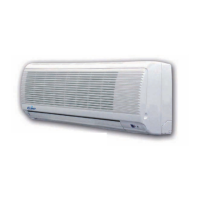
Do you have a question about the Clint HWW and is the answer not in the manual?
| Brand | Clint |
|---|---|
| Model | HWW |
| Category | Air Conditioner |
| Language | English |
Ensure proper grounding for personal safety and product functionality.
Strongly recommended that any servicing be performed by a qualified technician.
Installation must comply with all applicable local codes and ordinances.
Check unit rating plate for voltage, frequency, and current, and ensure supply capacity.
Refer to drawings for pipe, drain, and electrical connection locations before installation.
Do not use the product with water temperatures exceeding 60°C.
Ensure unobstructed air inlet and outlet for free airflow.
Wall must be stiff; ensure clearance on all sides as per figure.
Mount above eye level, avoid direct sunlight.
Position mounting plate horizontally and ensure it is level.
Mark holes for pipes and mounting screws according to the figure.
Route fan coil tubing and drain hose through the wall hole, securing as needed.
Tape tubing, drain hose, and cables; secure horizontal pipes in the back groove.
Connect water and drain lines, ensuring no traps and proper sealing of wall openings.
Insulate both inlet and outlet pipes with at least 6mm polyethylene foam.
Table detailing flare nut connection sizes for water inlet and outlet for various models.
Step-by-step instructions for removing the front frame grille, including screw removal and panel opening.
Reverse the removal process, ensuring proper hook and panel closure for correct operation and appearance.
Pour water into the drain pan to verify proper flow from the drain hose.
Connect field wiring, remove retainer, and insert cable through wall hole.
Strip insulation, connect wires to the terminal block, and secure the cable.
Connect unit to an adequate power outlet, observe voltage ranges and safety precautions.
Flood the coil with water and purge air by opening the purging valve until no bubbles appear.
Provides legends for electrical components, terminal blocks, and wire colors used in diagrams.
Detailed electrical wiring diagram for fan coil unit models 22 and 32.
Includes notes on installer-fitted wiring, compliance with national regulations, and fan motor connections.
Detailed electrical wiring diagram for fan coil unit models 42, 53, 72, and 83.
Specific details on indoor fan motor connection and speed selection for models 42, 53, 72, and 83.
Table mapping indicator lights (colors) to remote settings and their corresponding functions.
Identifies buttons and functions of the remote controller, including transmission notes.
Illustrates the remote controller layout with numbered buttons and explains their functions.
Explains how to select operation modes (Cool, Dry, Heat, Auto) and fan speeds using the remote.
Details how to adjust temperature settings and toggle between Celsius and Fahrenheit display.
Describes the operation of delay timer, cancel, louver control, and sleep mode functions.
Instructions for installing batteries in the remote controller and understanding the transmission indicator.
Proper grounding, voltage range, and avoiding water splashing are critical for safe operation.
Keep windows closed, maintain optimal temperature difference, adjust airflow direction appropriately.
Do not use for unintended purposes or direct airflow at plants and animals.
Explains common occurrences like delayed startup, odors, hissing, and mist emission during operation.
Lists checks to perform before calling for service for unit, efficiency, and remote control issues.
Advises when to contact qualified personnel, typically when all indicators are blinking due to sensor faults.
Step-by-step guide for cleaning air filters, including removal, cleaning methods, and reinstallation.
Ensures proper setup by checking vents and grounding, and recommends cleaning and shutdown for long periods.